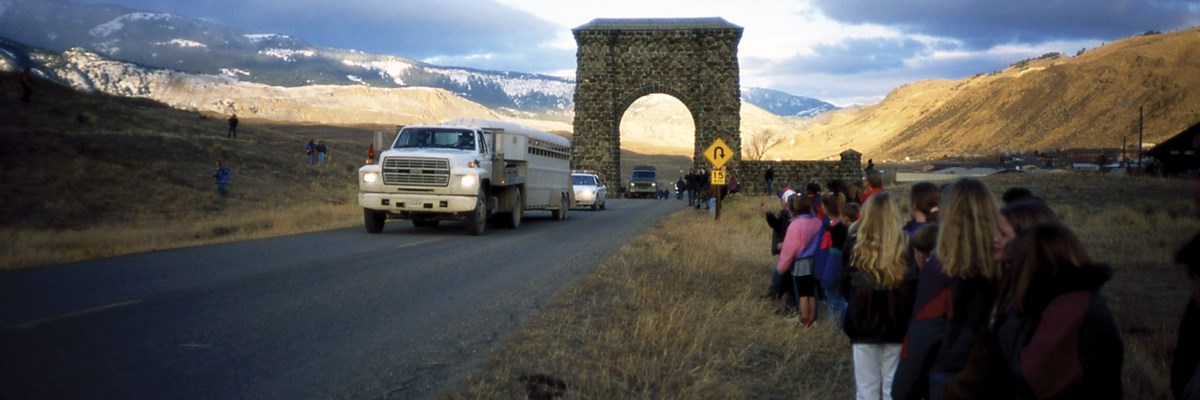
NPS In the 1800s, westward expansion brought settlers and their livestock into direct contact with native predator and prey species. Much of the wolves’ prey base was destroyed as agriculture flourished. With the prey base removed, wolves began to prey on domestic stock, which resulted in humans eliminating wolves from most of their historical range. Predator control, including poisoning, was practiced in the park in the late 1800s and early 1900s. Other predators such as bears, cougars, and coyotes were also killed to protect livestock and “more desirable” wildlife species, such as deer and elk. The gray wolf was present in Yellowstone when the park was established in 1872. Today, it is difficult for many people to understand why early park managers would have participated in the extermination of wolves. After all, the Yellowstone National Park Act of 1872 stated that the Secretary of the Interior “shall provide against the wanton destruction of the fish and game found within said Park.” But this was an era before people, including many biologists, understood the concepts of ecosystem and the interconnectedness of species. At the time, the wolves’ habit of killing prey species was considered “wanton destruction” of the animals. Between 1914 and 1926, at least 136 wolves were killed in the park; by the 1940s, wolf packs were rarely reported. By the mid-1900s, wolves had been almost entirely eliminated from the 48 states. An intensive survey in the 1970s found no evidence of a wolf population in Yellowstone, although an occasional wolf probably wandered into the area. A wolf-like canid was filmed in Hayden Valley in August 1992, and a wolf was shot just outside the park’s southern boundary in September 1992. However, no verifiable evidence of a breeding pair of wolves existed. During the 1980s, wolves began to reestablish breeding packs in northwestern Montana; 50–60 wolves inhabited Montana in 1994. In the 1960s, NPS wildlife management policy changed to allow populations to manage themselves. Many suggested at the time that for such regulation to succeed, the wolf had to be a part of the picture. Also in the 1960s and 1970s, national awareness of environmental issues and consequences led to the passage of many laws designed to correct the mistakes of the past and help prevent similar mistakes in the future. One such law was the Endangered Species Act, passed in 1973. The FWS is required by this law to restore endangered species that have been eliminated, if possible. By 1978, all wolf subspecies were on the federal list of endangered species for the lower 48 states except Minnesota. (NPS policy also calls for restoration of native species where possible.) 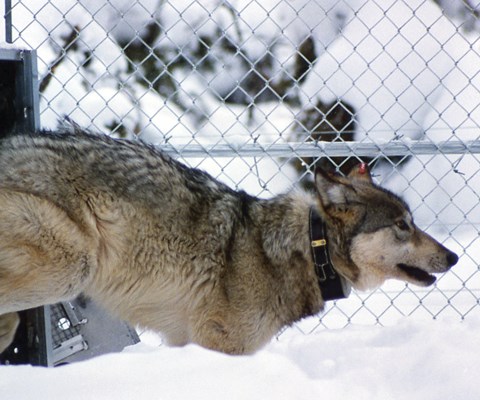
NPS Restoration ProposedNational Park Service policy calls for restoring native species when
The US Fish and Wildlife Service’s 1987 Northern Rocky Mountain Wolf Recovery Plan proposed reintroduction of an “experimental population” of wolves into Yellowstone. An experimental population, under section 10(j) of the Endangered Species Act, is considered nonessential and allows more management flexibility. Most scientists believed that wolves would not greatly reduce populations of mule deer, pronghorns, bighorn sheep, white-tailed deer, or bison; they might have minor effects on grizzly bears and cougars; and their presence might cause the decline of coyotes and increase of red foxes. In 1991, Congress provided funds to the FWS to prepare, in consultation with the NPS and the US Forest Service, an environmental impact statement (EIS) on the restoration of wolves. In June 1994, after several years and a near-record number of public comments, the Secretary of the Interior signed the Record of Decision for the final EIS for reintroduction of gray wolves to Yellowstone and central Idaho. Staff from Yellowstone, the FWS, and participating states prepared for wolf restoration to the park and central Idaho. The FWS prepared special regulations outlining how wolves would be managed as an experimental population. Park staff completed site planning and archeological and sensitive-plant surveys for the release sites. Each site was approximately one acre enclosed with 9-gauge chain-link fence in 10 x 10-foot panels. The fences had a two-foot overhang and a four-foot skirt at the bottom to discourage climbing over or digging under the enclosure. Each pen had a small holding area attached to allow a wolf to be separated from the group if necessary (i.e., for medical treatment). Plywood boxes provided shelter if the wolves wanted isolation from each other. 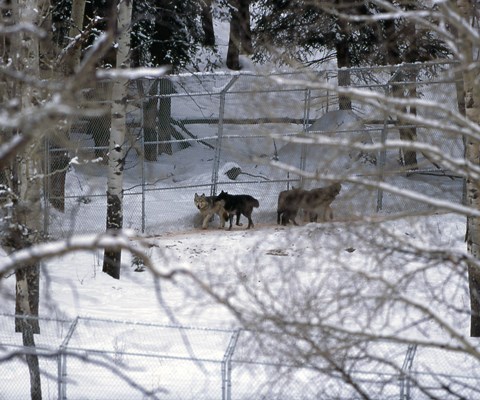
NPS Relocation and ReleaseIn late 1994 and early 1995, and again in 1996, FWS and Canadian wildlife biologists captured wolves in Canada and relocated and released them in both Yellowstone and central Idaho. In mid-January 1995, 14 wolves were temporarily penned in Yellowstone; the first eight wolves on January 12, and the second six on January 19, 1995. Wolves from one social group were together in each acclimation pen. On January 23, 1996, 11 more wolves were brought to Yellowstone for the second year of wolf restoration. Four days later they were joined by another six wolves. The wolves ranged from 72 to 130 pounds and from approximately nine months to five years in age. They included wolves known to have fed on bison. Groups included breeding adults and younger wolves one to two years old. Each wolf was radio-collared as it was captured in Canada. While temporarily penned, the wolves experienced minimal human contact. Approximately twice a week, they were fed elk, deer, moose, or bison that had died in and around the park. They were guarded by law enforcement rangers who minimized how much the wolves saw humans. The pen sites and surrounding areas were closed to visitation and marked to prevent unauthorized entry. Biologists checked on the welfare of wolves twice each week, using telemetry or visual observation while placing food in the pens. Although five years of reintroductions were predicted, no transplants occurred after 1996 because of the early success of the reintroductions. Some people expressed concern about wolves becoming habituated to humans while in the acclimation pens. However, wolves typically avoid human contact. Confinement was also a negative experience for them and reinforced their dislike of human presence. Results of the RestorationPreliminary data from studies indicate that wolf recovery will likely lead to greater biodiversity throughout the GYE. Wolves have preyed primarily on elk, and these carcasses have provided food to a wide variety of other animals, especially scavenging species. Wolves are increasingly preying on bison, especially in late winter. However, most bison biomass consumed by wolves is through scavenging bison dying from other natural causes. Grizzly bears have usurped wolf kills almost at will, contrary to predictions and observations from other areas where the two species occur. Wolf kills, then, provide an important resource for bears in low-food years. Aggression toward coyotes initially decreased the number of coyotes inside wolf territories, which may have benefited other smaller predators, rodents, and birds of prey. So far, data suggest wolves are contributing to decreased numbers of elk calves surviving to adulthood and decreased survival of adult elk. Wolves may also be affecting where and how elk use the habitat. Some of these effects were predictable but were based on research in relatively simple systems of one to two predator and prey species. Such is not the case in Yellowstone, where four other large predators (black bears, grizzly bears, coyotes, and cougars) prey on elk—and people hunt the elk outside the park. Thus, interactions of wolves with elk and other ungulates have created a new degree of complexity that makes it difficult to project long-term population trends. The effect of wolf recovery on the dynamics of northern Yellowstone elk cannot be generalized to other elk populations in the GYE. The effects depend on complex factors including elk densities, abundance of other predators, presence of alternative ungulate prey, winter severity, and—outside the park—land ownership, human harvest, livestock depredations, and human-caused wolf deaths. A coalition of natural resource professionals and scientists representing federal and state agencies, conservation organizations and foundations, academia, and land owners is collaborating on a comparative research program involving three additional wolf-ungulate systems in the western portion of the GYE. Results to date indicate the effects of wolf predation on elk population dynamics range from substantial to quite modest. The Role of the CourtsSeveral lawsuits were filed to stop the restoration on a variety of grounds. These suits were consolidated, and in December 1997, the judge found that the wolf reintroduction program in Yellowstone and central Idaho violated the intent of section 10(j) of the Endangered Species Act because there was a lack of geographic separation between fully protected wolves already existing in Montana and the reintroduction areas in which special rules for wolf management apply. The judge wrote that he had reached his decision “with utmost reluctance.” He ordered the removal (specifically not the killing) of reintroduced wolves and their offspring from the Yellowstone and central Idaho experimental population areas, then immediately stayed his order, pending appeal. The Justice Department appealed the case, and in January 2000 the decision was reversed. 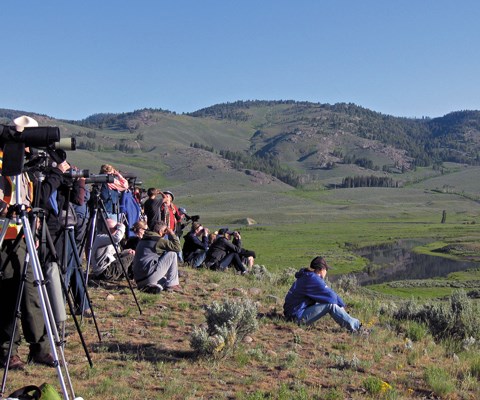
NPS Legal Status of a Recovered PopulationThe biological requirements for removing the wolf from the endangered species list have been achieved: at least 300 wolves and three consecutive years of at least 30 breeding pairs across three recovery areas. The FWS approved wolf management plans in Idaho and Montana, and in 2008 it delisted wolves in these two states and in Yellowstone and Grand Teton national parks. Several environmental groups sued to stop the delisting, however. They successfully argued that the Wyoming wolf management plan was flawed and that genetic connectivity had not been established between the GYE and the other recovery areas. A court decision required the wolf to be listed again as an endangered species. In 2009, the FWS again delisted wolf populations in Montana and Idaho, but not in Wyoming. A legal challenge resulted in the Northern Rocky Mountain wolf population being returned to the federal endangered species list. In 2011, wolf populations were again delisted in Montana and Idaho by an action of Congress. In 2012, a Congressional directive required the FWS to reissue its 2009 delisting, which stated that "if Wyoming were to develop a Service-approved regulatory framework it would be delisted in a separate rule" (74 FR 15123, April 2, 2009, p. 15155). On September 30, 2012, wolves in Wyoming were delisted and began to be managed by the state under an approved management plan. However, on September 23, 2014, wolves were relisted in Wyoming following litigation over that management plan. On April 25, 2017, wolves were delisted following an appeal of the previous litigation decision by the US District Court. On April 25, 2017, wolves were delisted yet again following an appeal of the previous litigation decision by the US District Court. Wolves are now hunted in Montana, Wyoming, and Idaho during regulated seasons. The FWS will continue to monitor the delisted wolf populations in Montana and Idaho for at least five years to ensure that they continue to sustain their recovery. The FWS may consider relisting the species, and even emergency relisting, if the available data demonstrate such an action is needed. Wolves are now managed by the appropriate state, tribal, or federal agencies; management in national parks and national wildlife refuges continues to be guided by existing authorizing and management legislation and regulations. OutlookThe future of wolves in GYE will depend on how livestock depredation and hunting of wolves outside the park are handled. Wolf populations will also continue to be affected by the availability of elk, deer, and bison, which fluctuates in response to hunting quotas, winter severity, and disease. To what extent wolves may have contributed to the decline in the northern Yellowstone elk population since the mid-1990s, or the possibly related resurgence of willow and aspen in some areas, is an ongoing topic of research. 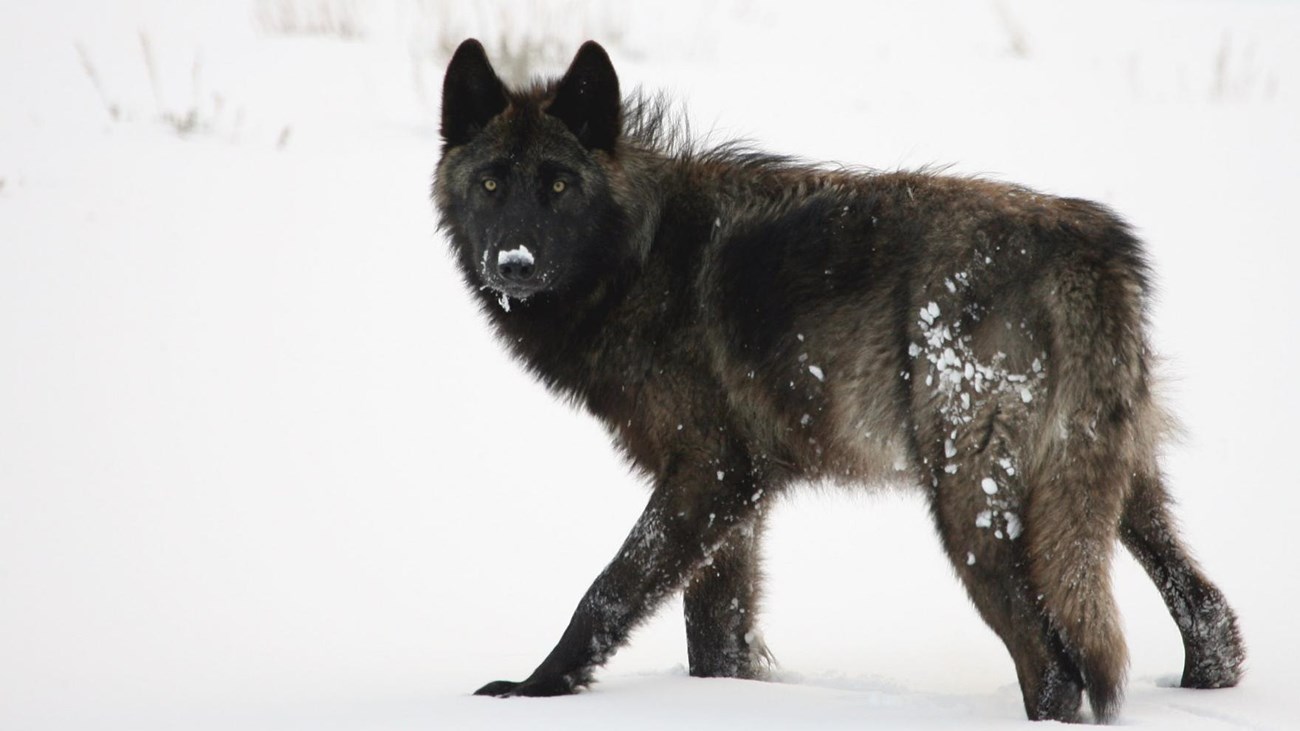
Gray Wolf
Gray wolves, restored in 1995, freely roam the park. 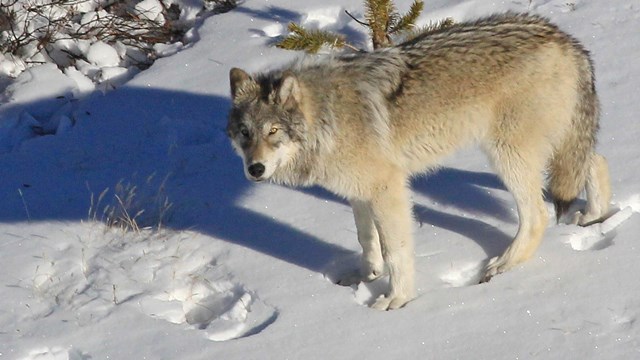
Wolf Q & As
Watch the park's wolf biologist answer some questions about wolves in Yellowstone. 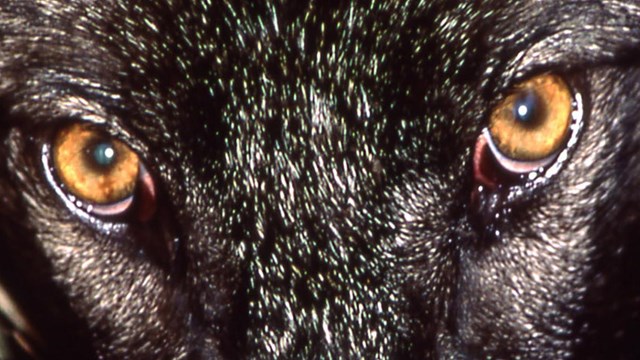
Wolf Reports
Since 1995, the Yellowstone Wolf Project has produced annual reports. 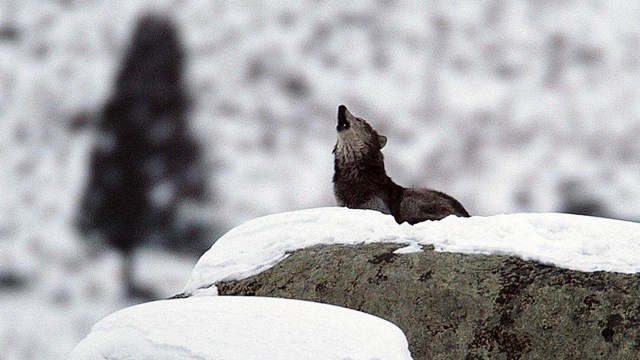
Yellowstone Science Issue on Wolves
Check out the Yellowstone Science periodical devoted entirely to wolves. |
Last updated: April 27, 2023
